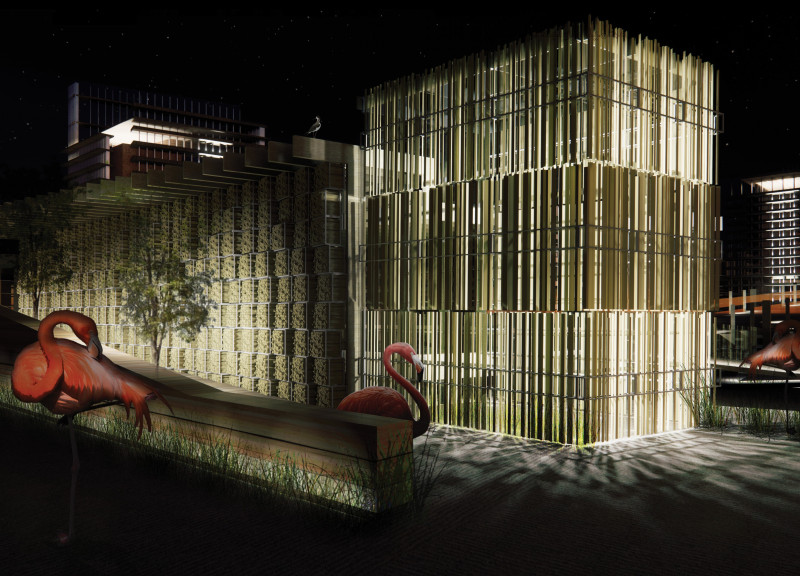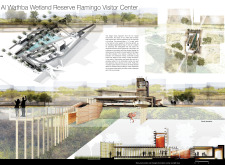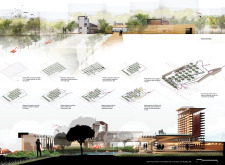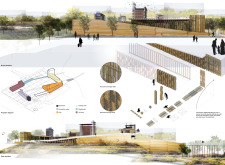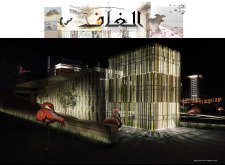5 key facts about this project
The Al Wathba Wetland Reserve Flamingo Visitor Center is located in a unique ecological area in the United Arab Emirates. It serves as a space for education and engagement regarding the importance of wetlands and their wildlife, particularly flamingos. The design focuses on integrating with the natural surroundings, using the Ghaf tree to highlight cultural and ecological themes. Buildings and pathways are raised to promote interaction with the landscape while ensuring minimal impact on the environment.
Design Concept
A grid layout forms the foundation for the visitor center, facilitating the growth of the Ghaf tree. This design choice supports both ecological preservation and cultural values associated with the tree. The overall concept emphasizes the relationship between architecture and nature, enhancing the visitor experience while reinforcing local heritage.
Structural Composition
Buildings and circulation paths are elevated, allowing for an unbroken natural landscape. This decision helps preserve habitats for various wildlife, including flamingos. The center features downdraft cooling towers for temperature control, putting sustainability at the forefront. By utilizing natural ventilation methods, the design aims to reduce energy consumption while keeping the space comfortable for visitors.
Material Integration
The selection of materials is key to the project’s connection with the environment. Reed blocks and panels serve as the envelope for both the information center and the seed bank, strengthening the relationship between the structures and their natural setting. Rammed earth walls create defined areas and offer a tactile response to the landscape. This choice also reflects local building traditions, acknowledging the area's architectural history.
Visitor Experience
The elevated circulation paths provide visitors with special views over the wetland. This design invites exploration and interaction with the ecosystem. Each element of the center is purposefully arranged to encourage learning and enjoyment of the natural surroundings. The thoughtful placement of functional spaces throughout promotes a deep appreciation for the wetland's ecological significance. The design ultimately emphasizes a commitment to environmental awareness, informed by cultural context and community engagement.


